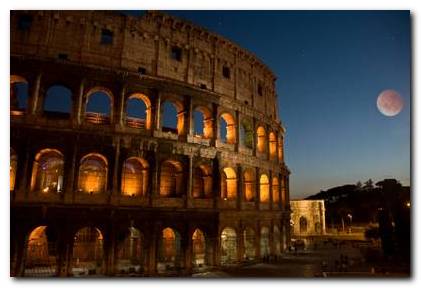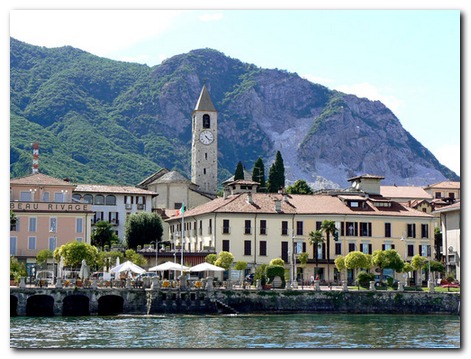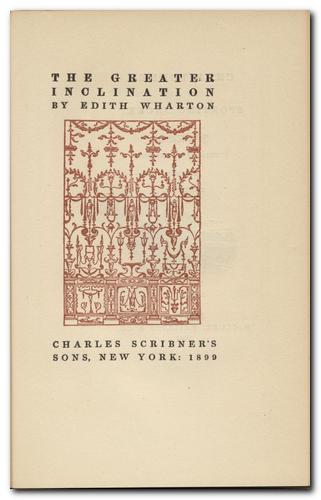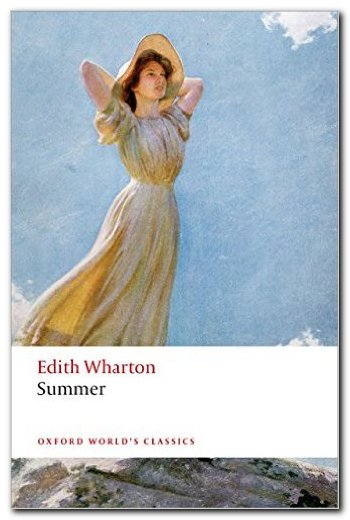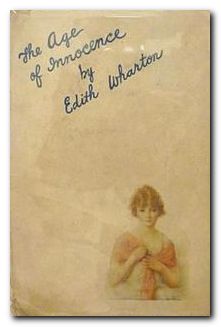tutorial, commentary, study resources, and web links
Edidth Wharton wrote the first version of Ethan Frome in French, as an exercise for her tutor and gave it the title Hiver (1907). It consisted of only a few pages, and was abandoned unfinished. But she returned to the story in 1911 and added the structural device of the outer narrator. Some people see the story as a reflection of Wharton’s own life, since it was around this time that she brought to an end both her own unhappy marriage and her love affair with W. Morton Fullerton. However, it is also possible to see in the story elements of her much earlier novel The House of Mirth (1905).

Edith Wharton
She regarded the novella as a significant turning point in her career as a writer – the end of her ‘apprenticeship’ as she called it. And for both its form and its brevity it has become a classic in the teaching of American literature, though it’s not so well known in Britain and the rest of Europe. However, it is an amazingly powerful story, and is told in a stark stripped-down style which suits both its subject and its setting of poor New England farming country.
Ethan Frome – critical commentary
Structure
The bulk of the narrative concerns events which take place within the space of only two or three days. But the story is ‘framed by a brief introduction and afterward which reveal the state of affairs twenty years later. The dramatic effect of this framing device is to both create narrative tension and to emphasise the fact that the events of these few days have an effect which lasts for the remainder of the characters’ lives.
- In the introduction an unnamed narrator (an engineer or project manager) stays in the local town whilst he is working nearby. He learns something of Ethan’s background from the locals, and hires him as a driver. One night they are cut off by a snow storm, and Ethan offers him accommodation for the night. This is related in first person narrative mode.
- Part two is a flashback in third person omniscient narrative mode recounting events that took place twenty years earlier. This includes Ethan’s unhappy marriage to Zeena, his passion for Mattie, and the events leading up to their fateful sledge ride.
- The afterward returns in first person mode to the morning after the introduction, in which the tragic consequences of the sledge ride are revealed to the narrator.
Narrative
The narrator claims that he has pieced together the story from scraps of information related to him by the local inhabitants. However, much of the story’s substance consists of the thoughts and feelings of Ethan and Mattie which only they could have known. Ethan is characterised as a taciturn and remote person who has been damaged by his life experiences, and the implication of the tale is that Mattie has been reduced to an almost vegetative state: so it is very unlikely that they would have given the narrator an account of their personal lives.
This is a weakness of narrative logic, but it is amply compensated by the concentrated drama of the main story itself.
The novella
You might wonder why Ethan Frome is generally regarded as a novella rather than a long short story. It’s because it possesses all the classic features of a novella.
Unity of place
Everything in the story takes place in Starkfield. The narrator arrives there; the events of twenty years earlier all took place there; and all the characters concerned are still there when the story ends.
Unity of action
The essential drama of the story unfolds in more or less one continuous action. Ethan realises he is attracted to Mattie – and so does Zeena. He enjoys his chaste dinner with her. And Zeena returns the following day with her plan to break up the relationship – at which Ethan rebels and takes Mattie on the fateful sledge ride.
These events are compressed into the shortest possible chronological sequence – which is framed by the narrator’s introduction and conclusion.
Unity of atmosphere
The events take place in winter, and the grim cold blanketting of snow remains present throughout as a unifying feature and a reminder of the emotionally life-supressing forces at work in the story.
Unity of character
There are a number of named characters in the story, but all of the drama is focussed on the three principals – Ethan, Zeena, and Mattie – who are locked together in a desperate power struggle.
They are locked into a triangle of rivalry at the start of events. Both Ethan and Mattie wish to escape from the bitter dominance of Zeena. But the power nexus is given an ironic twist be the events of the denouement: both Ethan and Mattie become entirely dependent on Zeena, who is forced to look after them.
Use of symbols
The persistent presence of cold and snow reflects the sexual repression which pervades the entire story.
Ethan’s house has lost part of its previous shape, just as he has become permanently injured as a result of the big ‘smash-up’ in the sledge ride.
Zeena has a glass bowl (a wedding present) which she never uses – but it is broken during the meagre supper that Ethan and Mattie share on their evening together.
The main issue
A short story is often a small incident from life which illuminates a character, or presents a moment of revelation. But a novella deals with a subject which stands for a much larger and all-important statement about the larger issues of life. It might contain a similar number of characters, but they represent more universal forces at work.
Ethan Frome deals with the entire adult lives of its three principal characters. The actions they take in the few crucial days which form the crux of the story turn out to determine the rest of their lives.
Ethan Frome – study resources
![]() Ethan Frome – Oxford World Classics – Amazon UK
Ethan Frome – Oxford World Classics – Amazon UK
![]() Ethan Frome – Oxford World Classics – Amazon US
Ethan Frome – Oxford World Classics – Amazon US
![]() Ethan Frome – Wordsworth Classics – Amazon UK
Ethan Frome – Wordsworth Classics – Amazon UK
![]() Ethan Frome – Wordsworth Classics – Amazon US
Ethan Frome – Wordsworth Classics – Amazon US
![]() Ethan Frome – Cliffs Notes – Amazon UK
Ethan Frome – Cliffs Notes – Amazon UK
![]() Ethan Frome – Spark Notes – Amazon UK
Ethan Frome – Spark Notes – Amazon UK
![]() Ethan Frome – York Notes – Amazon UK
Ethan Frome – York Notes – Amazon UK
![]() Ethan Frome – Norton Critical Editions – Amazon UK
Ethan Frome – Norton Critical Editions – Amazon UK
![]() Ethan Frome – free eBook formats at Project Gutenberg
Ethan Frome – free eBook formats at Project Gutenberg
![]() Ethan Frome – free audioBook version at Project Gutenberg
Ethan Frome – free audioBook version at Project Gutenberg
![]() Ethan Frome – DVD of 1993 movie adaptation – Amazon UK
Ethan Frome – DVD of 1993 movie adaptation – Amazon UK
![]() Ethan Frome – DVD of 1993 movie adaptation – Amazon US
Ethan Frome – DVD of 1993 movie adaptation – Amazon US
![]() Ethan Frome – Kindle eBook edition
Ethan Frome – Kindle eBook edition
![]() A Historical Guide to Edith Wharton – Amazon UK
A Historical Guide to Edith Wharton – Amazon UK
![]() The Cambridge Introduction to Edith Wharton – Amazon UK
The Cambridge Introduction to Edith Wharton – Amazon UK
Ethan Frome – plot summary
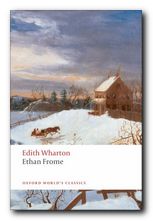 Ethan Frome is a poor working farmer who lives in a small remote town in Massachusetts. He exists in a state of near poverty with his wife Zeena (Zenobia), a grim, prematurely aged woman who makes hypochondria her hobby and his life a misery. Ethan has travelled as far as Florida and has intellectual aspirations, but he has never been able to develop or fulfil them. Living with them as an unpaid household help is Zeena’s cousin, Mattie Silver, a young woman who has lost her parents.
Ethan Frome is a poor working farmer who lives in a small remote town in Massachusetts. He exists in a state of near poverty with his wife Zeena (Zenobia), a grim, prematurely aged woman who makes hypochondria her hobby and his life a misery. Ethan has travelled as far as Florida and has intellectual aspirations, but he has never been able to develop or fulfil them. Living with them as an unpaid household help is Zeena’s cousin, Mattie Silver, a young woman who has lost her parents.
When Ethan escorts Mattie home from the local dance, he realises that he is deeply moved by her presence. This is something his wife is aware of, and she plans to be rid of the girl. When Zeena goes away overnight to consult a doctor, Ethan plans to enjoy a rare evening together with Mattie. They eat a humble supper together, and nothing except good feelings pass between them.
Next day Zeena returns to announce that she has ‘complications’ that will require a full time servant who she has already hired, and that Mattie must leave. Ethan is horrified by the prospect and makes plans to leave Zeena, but realises that he hasn’t the money or the prospects to support Mattie.
Nevertheless, he defies his wife and insists on driving Mattie to the station. On the way there he and Mattie declare their love for each other. Before the train arrives he fulfils a promise to take her sledging. After one very exhilarating run down a dangerous slope, Mattie proposes a suicide pact so that they will spend their last moments together. Ethan agrees, but instead of being united in death, they are both horribly injured.
Ethan and Mattie spend the rest of their lives in the care of Zeena.
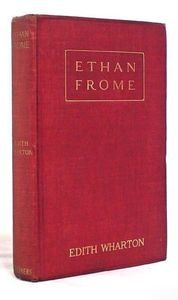
Principal characters
| I | an unnamed outer narrator who works in engineering |
| Ethan Frome | a poor farmer with aspirations for a better life |
| Zeena (Zenobia) | his grim, prematurely aged wife, who makes a career of hypochondria |
| Harmon Gow | a Starkfield resident |
| Mrs Ned Hale | the narrator’s landlady |
| Michael Eady | Irish store owner |
| Denis Eady | his son, who dances with Mattie |
| Mattie Silver | Zeena’s cousin |
| Andrew Hale | a builder |
| Jotham Powell | a hired hand who does work for Ethan |
Film adaptation
1993 film adaptation starring Liam Neeson
Further reading
Louis Auchincloss, Edith Wharton: A Woman of her Time, New York: Viking, 1971,
Elizabeth Ammons, Edith Wharton’s Argument with America, Georgia: University of Georgia Press, 1982, pp.222. ISBN: 0820305138
Janet Beer, Edith Wharton (Writers & Their Work), New York: Northcote House, 2001, pp.99, ISBN: 0746308981
Millicent Bell (ed), The Cambridge Companion to Edith Wharton, Cambridge: Cambridge University Press, 1995, pp.232, ISBN: 0521485134
Alfred Bendixen and Annette Zilversmit (eds), Edith Wharton: New Critical Essays, New York: Garland, 1992, pp.329, ISBN: 0824078489
Eleanor Dwight, Edith Wharton: An Extraordinary Life, New York: Harry N. Abrams, 1994, ISBN: 0810927950
Gloria C. Erlich, The Sexual Education of Edith Wharton, California: University of California Press, 1992, pp.223, ISBN: 0520075838
Susan Goodman, Edith Wharton’s Women: Friends and Rivals, UPNE, 1990, pp.220, ISBN: 0874515246
Irving Howe, (ed), Edith Wharton: A collection of Critical Essays, London: University of North Carolina Press, 1986,
Jennie A. Kassanoff, Edith Wharton and the Politics of Race, Cambridge: Cambridge University Press, 2004, pp.240, ISBN: 0521830893
Hermione Lee, Edith Wharton, London: Vintage, new edition 2008, pp.864, ISBN: 0099763516
R.W.B. Lewis, Edith Wharton: A Biography, New York: Harper and Rowe, 1975, pp.592, ISBN: 0880640200
James W. Tuttleton (ed), Edith Wharton: The Contemporary Reviews, Cambridge: Cambridge University Press, 1992, pp.586, ISBN: 0521383196
Candace Waid, Edith Wharton’s Letters from the Underworld, London: University of North Carolina Press, 1991,
Sarah Bird Wright, Edith Wharton A to Z: The Essential Reference to Her Life and Work, Fact on File, 1998, pp.352, ISBN: 0816034818
Cynthia Griffin Wolff, A Feast of Words: The Triumph of Edith Wharton, New York: Perseus Books, second edition 1994, pp.512, ISBN: 0201409186
Other works by Edith Wharton
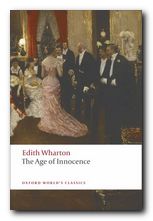 The Age of Innocence (1920) is Edith Wharton’s most famous novel, written immediately after the end of the First World War. It’s a brilliantly realized anatomy of New York society in the 1870s. Newland Archer is charming, tactful, and enlightened. He accepts society’s standards and abides by its rules, but he also recognizes its limitations. His engagement to the impeccable May Welland assures him of a safe and conventional future – until the arrival of May’s cousin Ellen Olenska puts all his plans in jeopardy. Independent, free-thinking, and scandalously separated from her husband, Ellen forces Archer to question the values and assumptions of his narrow world. As their love for each other grows, Archer has to decide where his ultimate loyalty lies.
The Age of Innocence (1920) is Edith Wharton’s most famous novel, written immediately after the end of the First World War. It’s a brilliantly realized anatomy of New York society in the 1870s. Newland Archer is charming, tactful, and enlightened. He accepts society’s standards and abides by its rules, but he also recognizes its limitations. His engagement to the impeccable May Welland assures him of a safe and conventional future – until the arrival of May’s cousin Ellen Olenska puts all his plans in jeopardy. Independent, free-thinking, and scandalously separated from her husband, Ellen forces Archer to question the values and assumptions of his narrow world. As their love for each other grows, Archer has to decide where his ultimate loyalty lies.
![]() Buy the book from Amazon UK
Buy the book from Amazon UK
![]() Buy the book from Amazon US
Buy the book from Amazon US
 The Custom of the Country (1913) is Edith Wharton’s satiric anatomy of American society in the first decade of the twentieth century. It follows the career of Undine Spragg, recently arrived in New York from the midwest and determined to conquer high society. Glamorous, selfish, mercenary and manipulative, her principal assets are her striking beauty, her tenacity, and her father’s money. With her sights set on an advantageous marriage, Undine pursues her schemes in a world of shifting values, where triumph is swiftly followed by disillusion. This is a study of modern ambition and materialism written a hundred years before its time.
The Custom of the Country (1913) is Edith Wharton’s satiric anatomy of American society in the first decade of the twentieth century. It follows the career of Undine Spragg, recently arrived in New York from the midwest and determined to conquer high society. Glamorous, selfish, mercenary and manipulative, her principal assets are her striking beauty, her tenacity, and her father’s money. With her sights set on an advantageous marriage, Undine pursues her schemes in a world of shifting values, where triumph is swiftly followed by disillusion. This is a study of modern ambition and materialism written a hundred years before its time.
![]() Buy the book from Amazon UK
Buy the book from Amazon UK
![]() Buy the book from Amazon US
Buy the book from Amazon US
 The House of Mirth (1905) is the story of Lily Bart, who is beautiful, poor, and still unmarried at twenty-nine. In her search for a husband with money and position she betrays her own heart and sows the seeds of the tragedy that finally overwhelms her. The book is a disturbing analysis of the stifling limitations imposed upon women of Wharton’s generation. In telling the story of Lily Bart, who must marry to survive, Wharton recasts the age-old themes of family, marriage, and money in ways that transform the traditional novel of manners into an arresting modern document of cultural anthropology.
The House of Mirth (1905) is the story of Lily Bart, who is beautiful, poor, and still unmarried at twenty-nine. In her search for a husband with money and position she betrays her own heart and sows the seeds of the tragedy that finally overwhelms her. The book is a disturbing analysis of the stifling limitations imposed upon women of Wharton’s generation. In telling the story of Lily Bart, who must marry to survive, Wharton recasts the age-old themes of family, marriage, and money in ways that transform the traditional novel of manners into an arresting modern document of cultural anthropology.
![]() Buy the book from Amazon UK
Buy the book from Amazon UK
![]() Buy the book from Amazon US
Buy the book from Amazon US
Edith Wharton – web links
![]() Edith Wharton at Mantex
Edith Wharton at Mantex
Biographical notes, study guides to the major novels, tutorials on the shorter fiction, bibliographies, critiques of the shorter fiction, and web links.
![]() Edith Wharton at Gutenberg
Edith Wharton at Gutenberg
Free eTexts of the major novels and collections of stories in a variety of digital formats – also includes travel writing and interior design.
![]() Edith Wharton at Wikipedia
Edith Wharton at Wikipedia
Full details of novels, stories, and travel writing, adaptations for television and the cinema, plus web links to related sites.
![]() The Edith Wharton Society
The Edith Wharton Society
Old but comprehensive collection of free eTexts of the major novels, stories, and travel writing, linking archives at University of Virginia and Washington State University.
![]() The Mount: Edith Wharton’s Home
The Mount: Edith Wharton’s Home
Aggressively commercial site devoted to exploiting The Mount – the house and estate designed by Edith Wharton. Plan your wedding reception here.
![]() Edith Wharton at Fantastic Fiction
Edith Wharton at Fantastic Fiction
A compilation which purports to be a complete bibliography, arranged as novels, collections, non-fiction, anthologies, short stories, letters, and commentaries – but is largely links to book-selling sites, which however contain some hidden gems.
![]() Edith Wharton’s manuscripts
Edith Wharton’s manuscripts
Archive of Wharton holdings at the Beinecke Rare Book and Manuscript Library
© Roy Johnson 2011
More on Edith Wharton
More on the novella
More on literary studies
More on short stories

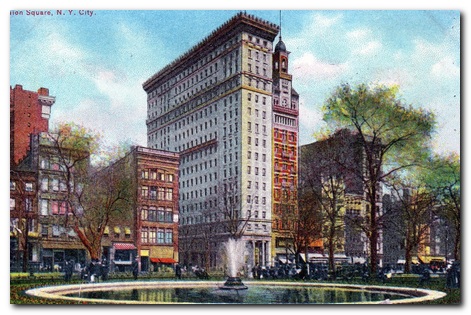

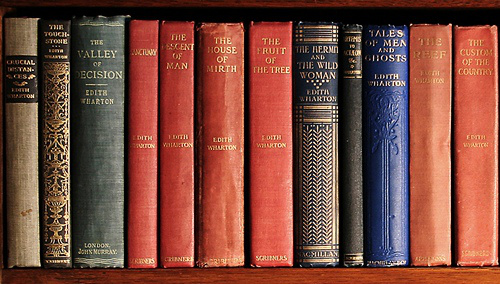

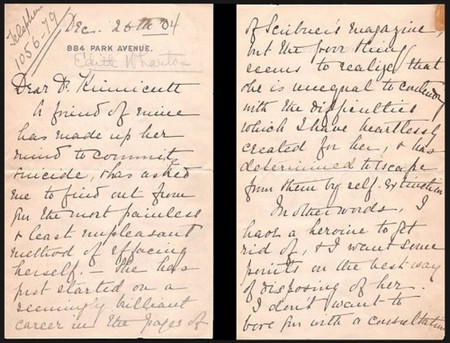

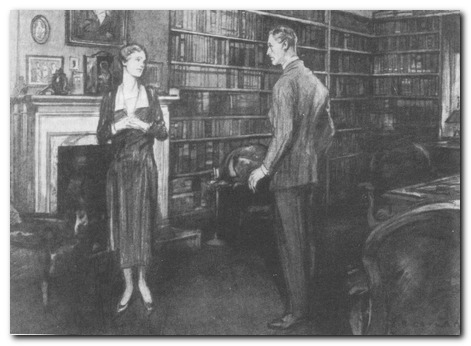
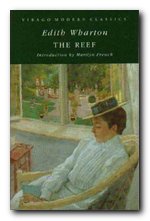 The Reef
The Reef